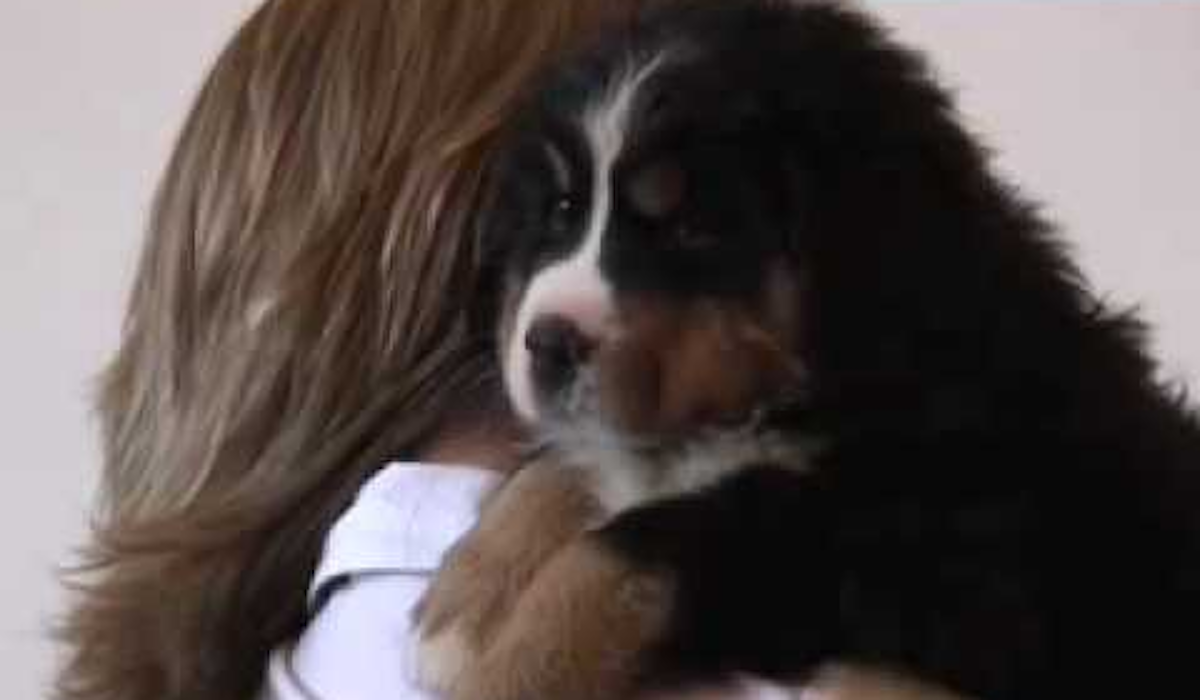Breeders Best Tips On Training Your New Dog

Just how do you feel in regards to Pets?
Need Help Training Your Dog? Try These Tips.
Do you want a canine companion? Do you understand what you will be responsible once you take possession of your dog? There are many responsibilities which come with dog ownership, and they start the first time you bring your puppy home. This article will show you the ropes and get you ready for your new best friend.
If you're taking your pup on a vacation, make sure that you take a picture of him for on your phone. This way, should he get lost, you have a picture you can show others. You can also use the picture to hand our "lost" flyers.
When you have a dog, make sure that you give him enough water. Water should be made available to your dog at all times of the day, particularly in the summertime. Put his water bowl somewhere where no one will trip over it, otherwise you'll be cleaning your floors all day!
You should have your dog spayed or neutered. Research has shown this simple procedure can lessen cancer risks and can give your dog a longer lifespan. collection of how to make a dog's testicle drop who have been neutered or spayed are also less likely to run or wander away from home.
Not everyone is good at training dogs, so quit trying if you see things are not going as well as planned. Instead of beating yourself up about it, get in touch with a trainer in your area. Since they have more experience with dogs, it may be much easier for them to train yours.
Your dog needs a stimulating environment if it is going to live a long and healthy life. Providing him or her with one is not really that hard. Simply make sure you take your dog for walks each day, and purchase a few toys that you and your pet can play with together.
Never allow your dog to be alone with small children, no matter how much you trust his temperament. Many little kids have been attacked by family dogs who have otherwise never demonstrated a tendency towards violence. Sleeping dogs may be woken by a toddler and react negatively or some other offense is committed against the animal that sets him off.
Let your dog know who is boss! Unless shown otherwise, a dog will naturally assume that he is the leader of the pack - once this has been established it is quite difficult to persuade him otherwise! When disciplining your dog, be firm in tone, but calm. Never punish a dog in a physical manner, as this will lead to lifelong mistrust. Also, when he behaves, remember to praise him!
Be prepared for natural disasters that also impact your dog. Have an emergency supply of water and food for him and know in advance if your local shelter for people will allow pets inside. Too many pets are injured or lost following storms, floods and other situations that cause chaos in a community.
Keep your dog in comfortable housing. They should be able to rest off the floor and away from drafts. A training crate is a good choice or any covered shelter outside. Try placing a dog bed inside that has a warm blanket or a pillow inside. Wash the dog's bedding frequently.
When you own a dog, you typically understand the general costs of ownership, such as food, vet visits, and grooming. A generally overlooked cost is emergency situations. Although it may not happen frequently, you should have a bit of money set aside for any emergency that may arise. It's better to be prepared for an emergency vet visit than to wonder how you are going to pay for it.
Just like humans, dogs need to get a good amount of exercise each and every day. If your dog does not get the exercise it needs, it health will decline, and so will his attitude towards life. Take the time to exercise your dog for at least a half hour each day for the best results.

If you are planning on getting a new puppy, plan on investing in some training classes. These classes offer a great opportunity for your puppy to socialize with other dogs and learn basic commands. These classes will provide your new puppy with a great foundation for future training and will help them get a great start in life.
If your dog makes messes in the house or chews when you are away, consider crate training. Crate training involves providing your pet with an appropriate sized crate to,stay in while you're out of the house. It can keep your pet and belongings safe. Just make sure to never leave him in the crate for a very lengthly period of time.
Make sure that you spend adequate time on each thing that you try to teach your dog. Even though your dog might catch on to something, for example the "sit" command, it may not be mastered. You'll want to make sure that the command is done every time that you ask no matter what situation you are in before you move onto a new command.
When you select food for your dog, do so with care. There are a variety of kinds of dog food on the market; you should choose something that is age and size appropriate. Letting your dog eat leftovers is something you may think can save you money, but really that's not healthy for it at all.
Make sure that you buy an appropriate sized collar for your dog in order to ensure its health and safety. If the collar is too lose, it may become snagged on something. If the collar is too tight, it may restrict the dog's breathing ability. Allow for a two finger space between the dog and the collar.
When crate training a dog, be sure to allow it to stop making noise (barking, whining, crying) for at least 30 seconds before opening the crate up. This is important because otherwise the dog will believe that as long as it keeps making noise, you will come and open the crate. It can be hard to do this, but is necessary. Of course, always be sure that the dog is safe and not making noise for some other reason.
Having a dog isn't all fun and games. You have to give yourself some time to really think about what you're doing, and to act accordingly. You can use the tips here to help you to know what you need to do. You can always have a happy dog, if you take the time to give it a little thought.
Working Australian Shepherd vs Show – Which is a Better Choice?
As a newcomer to the Aussie scene, you are sure to be repeatedly confronted with the two terms “working Australian Shepherd” and “show Australian Shepherd”.
What is behind these terms and how do these dogs differ from each other?
Can a newbie train a working Australian Shepherd, or should a family choose a dog from a show line?
Show Australian Shepherd
These dogs are primarily bred for the purpose of achieving the highest possible rating at (beauty) shows. There are such exhibitions in many places and by many associations.
Puppies that do not reach the quality of a future show champion are often offered as easy-to-use family dogs.
At the exhibitions, the dogs are judged in rings, separated according to males and females and different age groups, solely with regard to their beauty and the correctness of their physique.
Character, motivation, performance, health, robustness, and sporting opportunities play a subordinate or no role in the assessment. It’s all about having the most beautiful dog possible in the ring.
Often the show judges prefer dogs with a lot of colors and distinctive markings, a very strong, heavy build, a lot of fur, and with large sizes within the standard.
Since these exhibitions often take place with many people and dogs in a confined space, there are often few opportunities to run around. The dogs often spend a long time in so-called exhibition cages at the exhibition until it is their turn. Dogs with a “chilled” mind is much easier, and it turns out that show line breeders usually breed a type that can be characterized as follows:
They are often more difficult to motivate and sensitive in warm temperatures due to the pronounced coat and strong undercoat. Sometimes they have to get a lot of grooming so that the undercoat does not become matted and starts to smell.
Character defects such as fearfulness, insecurity, or aggressiveness can easily be covered up by an experienced exhibitor. Therefore the championship does not guarantee a first-class character.
Working Australian Shepherd
The original Australian Shepherd was and is still a pure working dog who tirelessly helps the ranchers with their work.
He was selected to have a lot of interest in cattle, to be easily trainable, to have a high level of stimulus and drive control, and the desire to work with and please his humans.
This package creates the fascination of the dog. It seems as if he only has eyes for his owner, obeys the slightest word, can do the most incredible tricks, and is successful in every area of dog sport.
But for breeding, the following applies: “If you don’t use it, you lose it”.
This means that characteristics and physical traits that are not constantly requested and checked by the breed as part of a meaningful selection are lost or changed to a form that no longer corresponds to the original characteristics.
Working line dogs were selected solely on the basis of their work performance and robust health, which means that these dogs have comparatively few problems with diseases of the musculoskeletal system such as hip dysplasia, elbow dysplasia, and Osteochondritis dissecans. Epilepsy is also comparatively rare in working Australian Shepherds.
However, since they are not bred with a particular beauty standard in mind, they are often much lighter and smaller in size, have lighter, narrower heads and often significantly less and very easy-to-care-for fur, and are therefore often not as colorful and impressive as their colleagues from the show ring. Upright ears instead of the button ears desired for the show ring also appear from time to time.
https://petsroof.com/working-australian-shepherd-vs-show/
As a devoted person who reads on Pets, I imagined sharing that piece of writing was a great idea. Enjoyed reading our write up? Please quickly share it. Help someone else locate it. We enjoy your readership.
